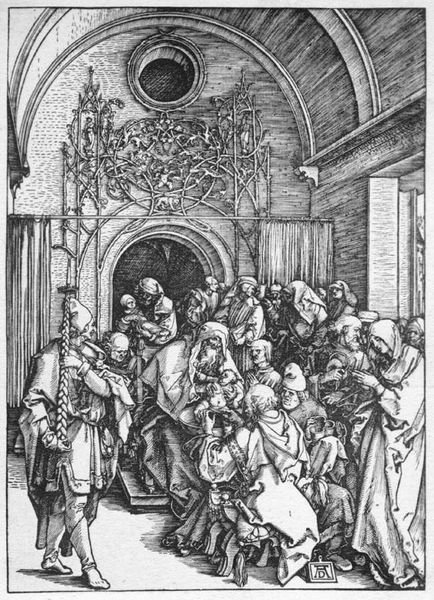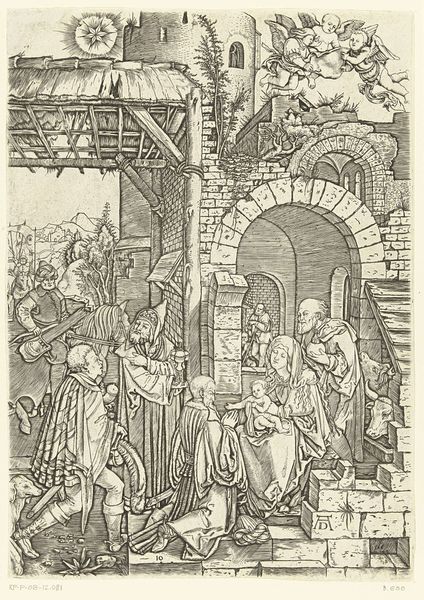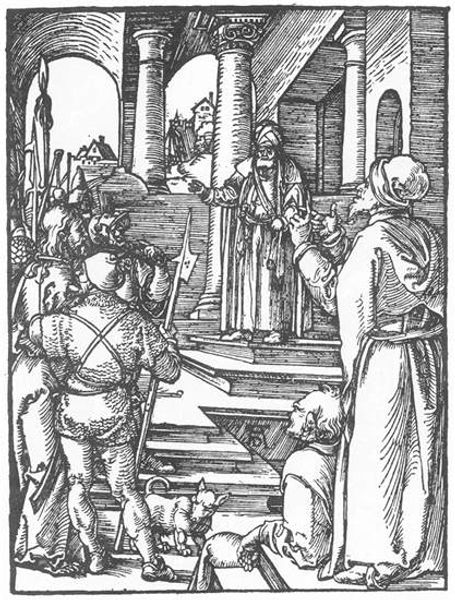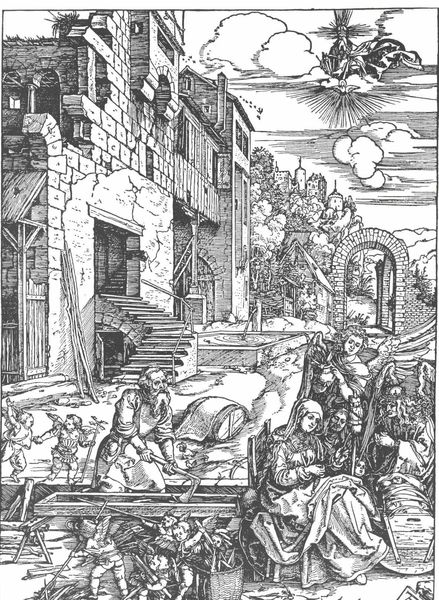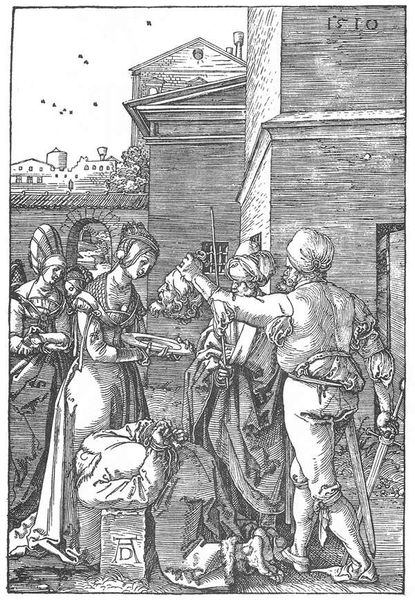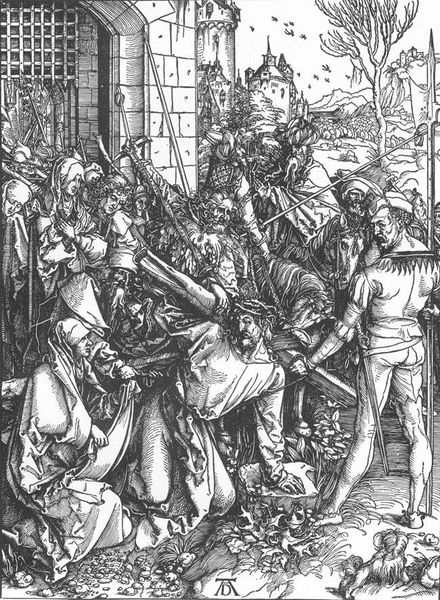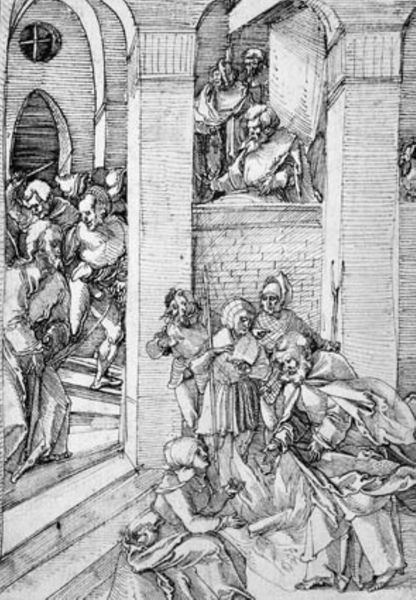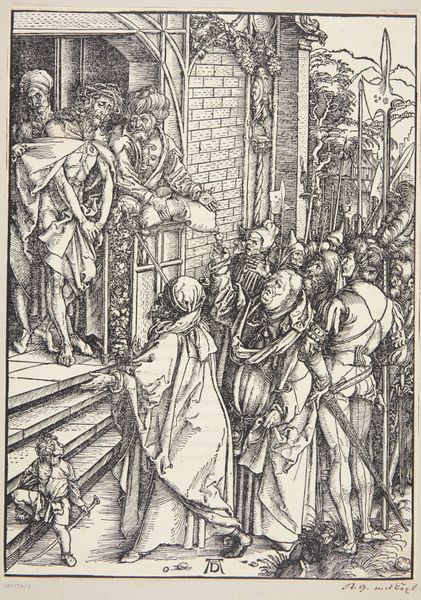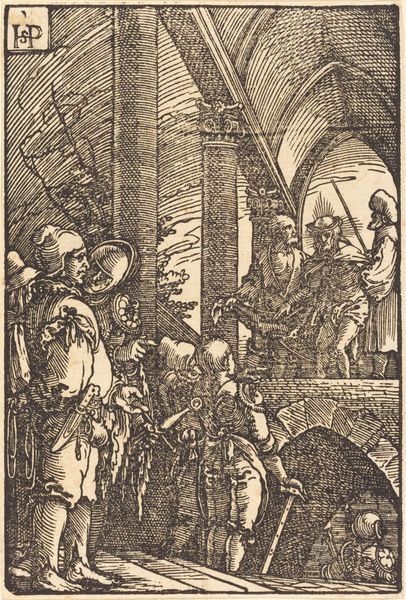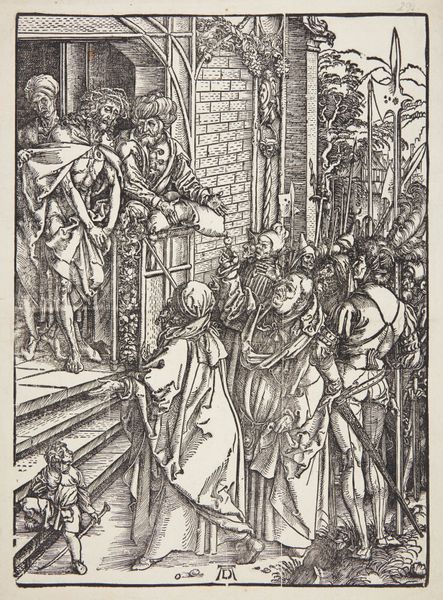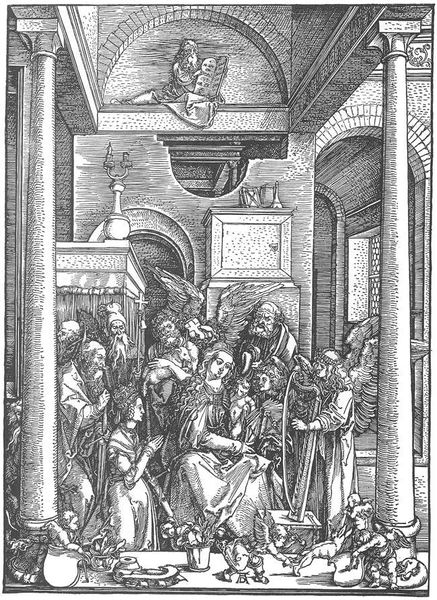
print, woodcut, engraving
#
narrative-art
# print
#
landscape
#
perspective
#
figuration
#
ink line art
#
woodcut
#
christianity
#
line
#
history-painting
#
northern-renaissance
#
engraving
Copyright: Public domain
Editor: Here we have Albrecht Dürer's "The Adoration of the Magi," a woodcut from 1502, currently housed in the Albertina in Vienna. The detail is astounding for a print! I'm particularly struck by the architectural details, contrasting so sharply with the rustic setting of the nativity. How do you interpret this work? Curator: It's fascinating to see how Dürer merges the sacred with the contemporary world, isn't it? Consider the setting: a crumbling architectural space rather than a traditional stable. What might that signify, socially and politically, in early 16th century Nuremberg? Think about the burgeoning merchant class and their engagement with religious themes. Editor: That's interesting! I hadn't considered the socio-political commentary implied by the setting. So the magi’s arrival isn’t just a religious event; it’s commenting on something happening in the world around Dürer. Curator: Precisely. And consider the function of prints at that time. They were relatively inexpensive and easily disseminated, allowing religious narratives, filtered through the artist's lens, to reach a wider audience than painted altarpieces ever could. So, who do you think Dürer is trying to reach, and what message is he conveying? Editor: Maybe it's a message about finding holiness in unexpected, even decaying places, for an increasingly urban and commercially-focused audience? A sort of "divine amidst the mundane?" Curator: An excellent way to summarize. Dürer's skill with woodcut also elevated the medium. Previously it was considered craft work. But Dürer demonstrated how woodcut could produce images rivalling painting, thus challenging the art establishment itself. Editor: So this artwork challenges not only how religion is seen, but also existing ideas about the art world and printmaking. That’s more than I initially appreciated. Curator: Absolutely, seeing art in its historical moment transforms our understanding and appreciation.
Comments
No comments
Be the first to comment and join the conversation on the ultimate creative platform.

